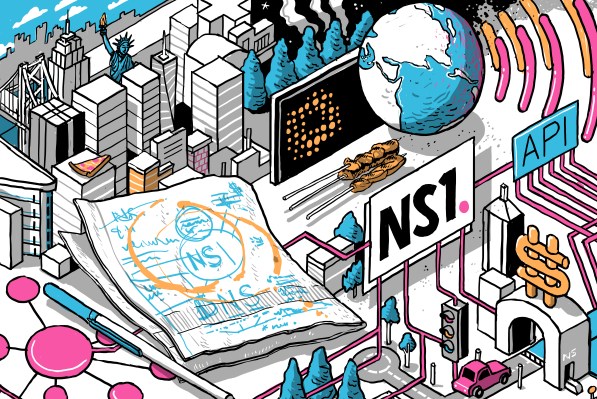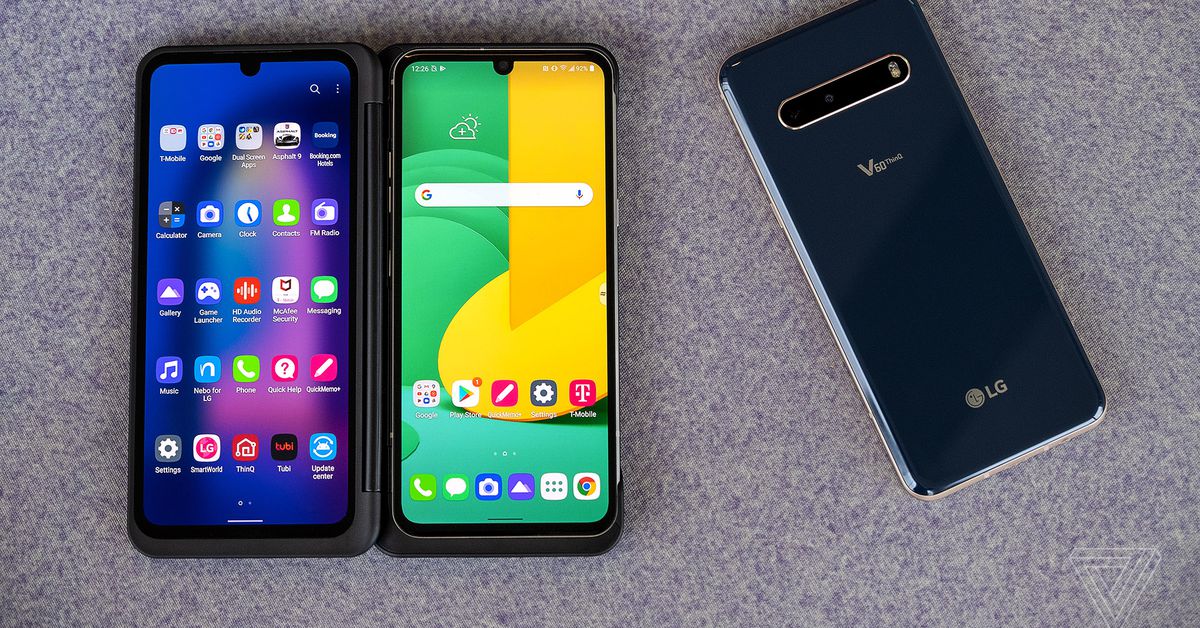What is a verified Twitter account and how to get one
Verification can be a handy tool in building an audience. | Photo by Fabian Sommer/picture alliance via Getty ImagesIf you’ve spent any time on Twitter — or any social media, really — you’re likely familiar with the blue checkmark....

If you’ve spent any time on Twitter — or any social media, really — you’re likely familiar with the blue checkmark. These badges indicate verified accounts. According to Twitter, a verified account is any account of public interest that’s been authenticated by the company itself. Basically, it’s Twitter’s way of letting everyone know that you are who you say you are.
It’s not hard to see why you might want a verified Twitter account. Recognizability, curtailing misinformation, building trust with an audience — these are all major reasons why individuals, public figures, and brands alike seek the blue checkmark. But while it’s clear that verification comes with some benefits, getting verified may not be a walk in the park.
Twitter’s verification process has historically been a hot mess. When the blue checkmark was introduced in 2009, there was no way to apply for verification — Twitter had to magically bestow it upon you. Then, in 2016, Twitter rolled out a public verification program. The company then closed applications in 2017 and didn’t reopen them until 2021.
During that four-year hiatus, Twitter thankfully clarified its verification policy, the application process, and which accounts are eligible for verification. If you want a blue checkmark, here’s everything you need to know to apply.
Do you have an eligible account?
According to Twitter’s Verification FAQ, eligible accounts “must be notable and active” and fall into one of six categories. These categories are:
Government Companies (including brands and nonprofit organizations) News organizations and journalists Entertainment Sports and esports Activists, organizers, and “other influential individuals”:no_upscale()/cdn.vox-cdn.com/uploads/chorus_asset/file/23724312/rv2.png.img.fullhd.medium.png) Twitter has six categories for eligible accounts.Image: Twitter
Twitter has six categories for eligible accounts.Image: Twitter
If you don’t fall into these categories but still have an account of interest, don’t fret too much. There’s still a lot of wiggle room when it comes to “other influential individuals” — and Twitter’s aware of this. For instance, when it rolled out its new verification policy, the company said it was planning to add categories for academia, scientists, and religious leaders.
Even if you clearly fall into one of these categories, terms like “notable” and “active” can feel subjective. For what it’s worth, Twitter defines a notable account as one that either represents or is associated with a high-profile individual or entity. If you’ve been written about in the news, have a Wikipedia page, or have a follower / mention count in the top .05 percent in your region, Twitter will consider your account notable. These aren’t the only criteria Twitter considers, however. Twitter says it uses a variety of “internal signals” and third-party sources to evaluate whether an account is of public interest.
It’s a bit easier to determine whether Twitter considers your account “active.” Active accounts are those that:
Have complete profiles (e.g., a name and image) Are public and have been logged into within the past six months Have confirmed contact information Are in good standing (e.g., haven’t been locked out for violating Twitter’s policies)But even if you meet all these criteria, your account still may not be eligible. Ineligible accounts include:
Parody accounts Accounts for pets or fictional characters Newsfeeds Unofficial fan accounts Accounts that promote hateful contentHow to apply for verification
Before you apply, you’ll need to get your documents in order. Generally, you’ll need a way to verify your identity, an official email, and some supplemental evidence. The type of evidence you need will depend on the kind of account you have. For example, a content creator will need to provide different information than a government official.
Here are links to the evidence Twitter requires for each type of account as well as other prerequisites:
Government offices, election candidates, and individuals News organizations and journalists Companies, brands, and organizations Entertainment Sports and gaming Activists and organizers Content creators and influential individuals:no_upscale()/cdn.vox-cdn.com/uploads/chorus_asset/file/23724433/rv3.png.img.fullhd.medium.png) Part of the process is authenticating that you are who you say you are.Image: Twitter
Part of the process is authenticating that you are who you say you are.Image: Twitter
Once you’ve got everything you need, the actual application process isn’t too hard. (Though whether you successfully get verified is another matter entirely.) To apply on either Twitter’s web or mobile app:
Head to Settings and privacy. You can access this by tapping your profile picture in the mobile app or clicking the three-dot button in the left-hand menu on the website. Select Your account and then Account information. On the website, you’ll be prompted to enter your password. You probably won’t have to do this on the app. Select Verification request. You’ll be prompted to submit a photo of your government-issued ID, your official email address, and additional evidence, as mentioned above.Once you’ve submitted your application, you’ll have to wait for Twitter to review it. You should be notified via email within 14 days about whether you’ve been approved. If your application is unsuccessful, you’ll have to wait 30 days before you can apply again.
Tips to get successfully verified
Even if you meet all the criteria and have all the necessary evidence, you can still get rejected. It’s annoying, but here are some tips for stacking the odds in your favor. Keep in mind that even if you follow these to the letter, the whole verification process is still pretty arbitrary.
:no_upscale()/cdn.vox-cdn.com/uploads/chorus_asset/file/23724632/smallrv4.png.img.fullhd.medium.png) You may have to submit multiple applications in your verification journey.Image: Twitter
You may have to submit multiple applications in your verification journey.Image: Twitter
Keep your profile boring
There are a lot of ways to showcase your personality on Twitter, like punny display names, silly profile pics, and jokey handles. Unfortunately, these can count against you during the verification process. It might be cute to use your favorite video game character as your profile pic, but it can also be a big reason why you get denied. In general, it’s a good idea to:
Use a real picture of yourself or your business’s logo Use your actual name as your display name You can have a quirky handle, but relating it to your actual name may helpIt’s not as much fun, but while your account is under review, it’s better to show that you are an actual human being (or organization). You can always change it after you’ve been verified, though Twitter warns that you can lose your verification if you do. However, this seems to be randomly enforced, and there are plenty of verified accounts that partake in memes with no consequence.
Optimize your profile
You should clearly state what you do in your bio. For example, you’ll often see many journalists note their position, tag the publication they currently write for, and mention other sites where you might find their byline. Local government officials will often list what they’re running for, their current position, and past experience. Of course, the more famous you are or the higher your follower count, the more leeway you’ll have. But if you only have a modest following, this can help.
Secondly, if you have an official website, you should link out to it. This can be a portfolio if you’re a freelancer, an author page, a Linktree if you’re an influencer, or even a professional website. It also helps if the email associated with your account is your professional one.
You also want to make sure that your bio doesn’t have missing fields. Throw up a cover photo, add your birthday, pin a relevant tweet to your profile, and include your business’s location — anything that makes it clear that you’re the real deal. While you’re at it, try to make sure the images you’re using aren’t grainy.
Make your account public and engage
A reminder: make sure your account is public. There are valid reasons why you may want a private account, but as we mentioned earlier, you have to be public at the time of application.
Also, be a regular user. Twitter specifically says you need to have logged in within the past six months, but it helps if you consistently tweet and engage with other users for a sustained period before applying. Just don’t fall into the trap of simply retweeting other accounts — that won’t prove that you’re bringing anything original to the platform. One easy way to increase engagement is by posting high-quality photos to go along with your tweets. You’ll make a stronger case for yourself if you show that you know how to use the platform and are using it for a specific purpose. There’s no set way to engage with your community, so you can be creative here.
That said, don’t be a jerk. Harassing people, misleading users, or violating Twitter’s rules is a good way to get rejected real fast.
Don’t get too discouraged
Twitter’s taken great strides to make this process more transparent, but you might need to apply multiple times to be successfully verified. (Yours truly had to apply three times despite having lots of evidence of my job.) The good news is that there’s no limit to the number of times you can apply.
Building an audience or a “notable and active” Twitter account takes time. If you don’t get verified the first time around, experiment and try again.

 MikeTyes
MikeTyes 
































